Effective Note-Taking Methods and Tips To Take Better Notes
Updated on 05 Jan 2024 • 7 min read • posted by Maria H
Are you struggling to take clear, organized, and well-structured notes?
Are you finding it challenging to write down everything teachers or colleagues say?
Or perhaps you like to listen and engage with others and struggle to take notes at the same time?
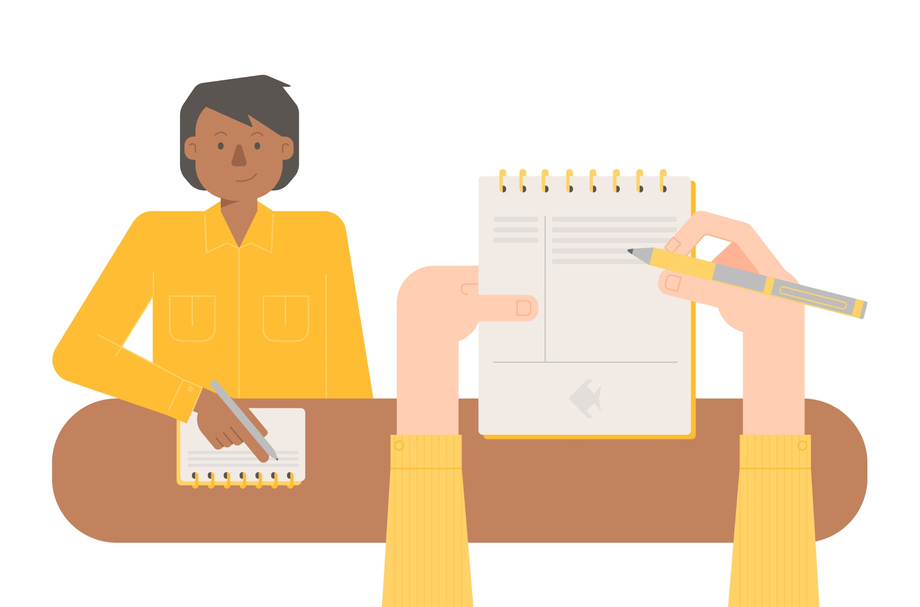
Effective note-taking during lectures, meetings, or events is a great way to improve your productivity because it helps you remember critical information and stay focused during the event.
In fact, numerous studies have shown that note-taking is an effective way to improve your memory, focus, and thinking.
And to further this argument, research shows that structured or outlined notes can help students perform better academically and achieve 13% higher test results.
But the reality is that note-taking is a skill, and it takes practice to hone it. That’s why to help you to find out how to improve your note-taking skills, we’ve shared below some of the best note-taking strategies and some practical tips on how to take notes effectively.
What is Note Taking
Before diving into how to take notes effectively, let’s define what note-taking is. Note-taking is the practice of recording key information. Notes are essential to the research process because they serve as a study aid when attending lectures or group discussions and material for your project when participating in meetings.
But taking notes isn’t about scribbling down whatever information comes your way or strikes you as important. As mentioned, taking notes is a skill. The research conducted at the Dominican University of California stands that writing down new information allows the brain to encode information deeper. And to make the most of your notes, you need to use a proven system that will allow you to structure your thinking and tie everything together.
Best Way of Taking Notes
There’s no right or wrong note-taking system. After all, the right method is the one that works for you and helps you learn more efficiently and boosts your productivity.
But to bring the odds in your favor, we’ve rounded up five proven note-taking methods below.
Outline Method
This method is fantastic for people who thrive on simplicity and need structure.
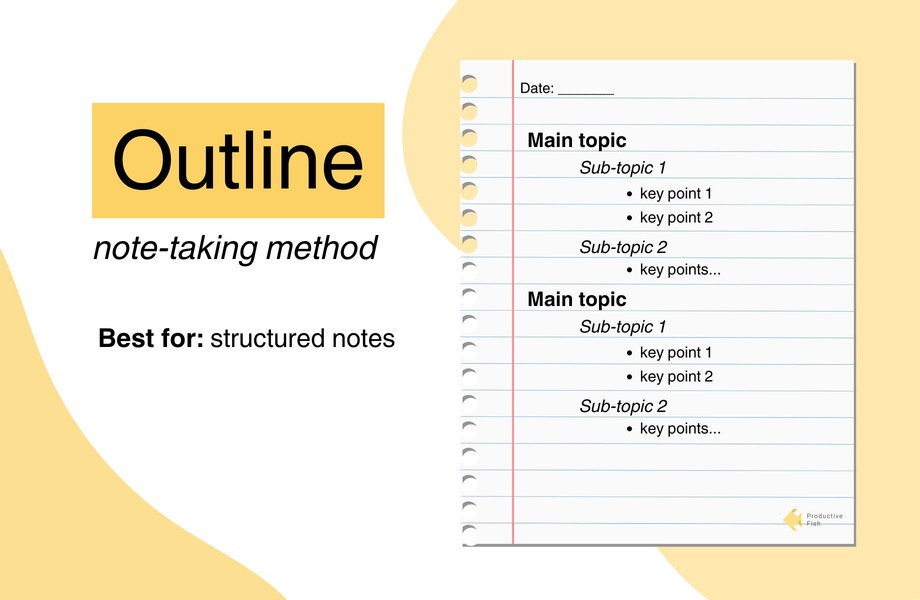
The Outline Method requires students to organize information by headings and subheadings. It also involves using points, subpoints, and different spacing to make things more structured and visual.
Headings identify the important topics during a meeting or lecture, and subheadings highlight the four or five key points that were covered. Under the subheadings, you can then add subpoints to record in more detail what was discussed.
Cornell Method
The Cornell Method is designed to encourage reflection and is a great method if you want to fully understand a subject. Developed by Professor Walter Paw in the 1950s, this note-taking technique works for any event, from conferences and brainstorming sessions to lectures and group discussions.
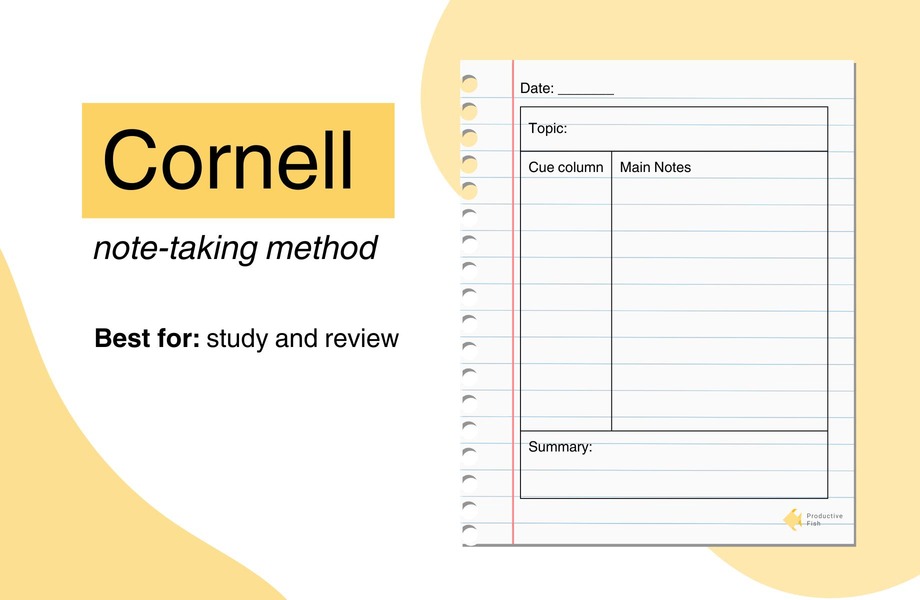
The idea is to divide your page into three sections called ‘’cues’’ (narrow column on the left), ‘’notes’’ (wider column on the right), and ‘’summary’’ (at the bottom). All the notes you take during a lecture or meeting should go in the ‘’notes’’ section.
- The ‘’cues’’ section is dedicated to potential test questions, people names, main points, and any other topline key information.
- In the notes section, you should expand on these main points and other cues by using indentation and numbering to organize the specifics. You should also use headings to structure the information.
- The summary section is a two or three-sentence paragraph summarizing both the ‘’cues’’ and ‘’notes’’ sections.
Mind Mapping Method
The Mind Mapping Method is typically preferred by visual learners who like to easily see the relationships between topics. It can be particularly effective for complex issues or when attending meetings where the topics discussed are unpredictable and can be periodically abandoned.
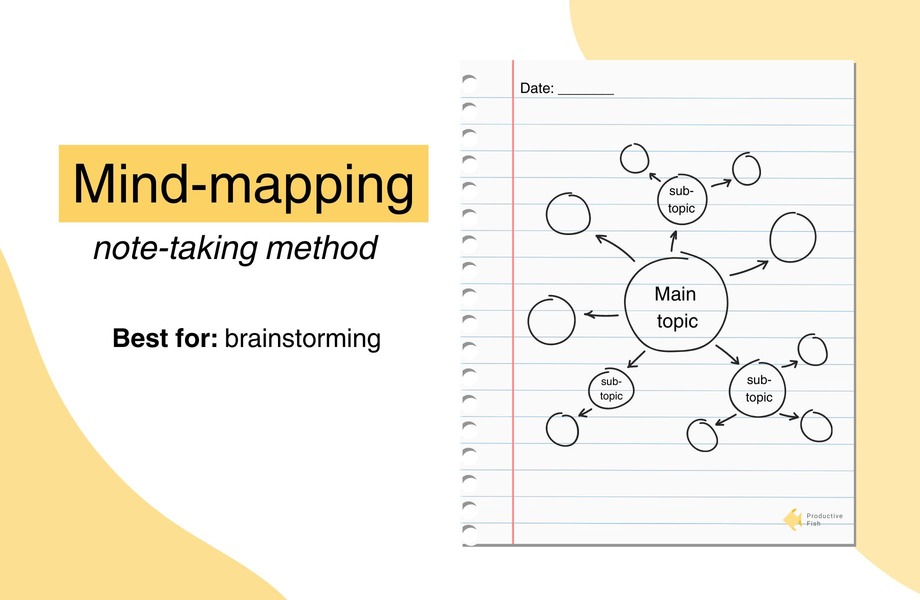
A mind map starts with the main concept at the center of your page, and the ideas fueling this concept branch out from there.
For instance, you might draw a bubble in the center of your page about ‘’note-taking methods’’. Then, draw three smaller bubbles in each corner of your page with ‘’The Mind Mapping Method’’, ‘’The Cornell Method, and ‘’The Outline Method’’. Then, from each of these bubbles could derive other small bubbles explaining each method with bullet points.
Q/E/C Note-Taking Method
Q/E/C stands for "Question, Evidence, Conclusion”. It’s a note-taking method, which offers a structured approach to process, analyze, and remember crucial details from a wide array of content.
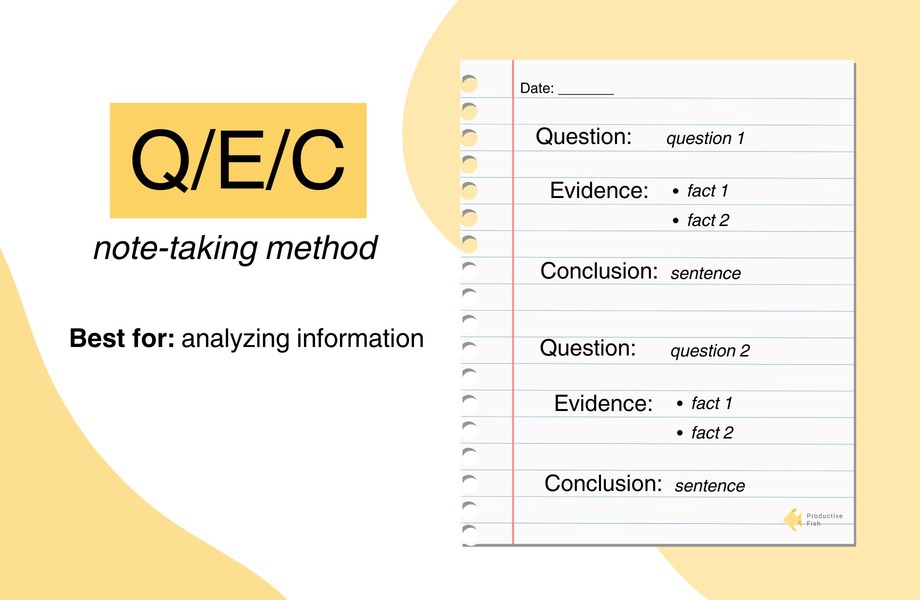
Here is 3 main steps on how you can put Q/E/C into action:
- Start with the "Question" phase. As you read, formulate questions that arise from the content.
- Than move on to the "Evidence" part. Here, seek out the key points and data within the text that respond to your questions. This may involve highlighting critical passages or summarizing essential details.
- Finally, reach the "Conclusion" stage. Infer your conclusions based on your questions and gathered evidence. This process cements your understanding.
Let’s imagine you are reading an article about meditation:
- During the "Question" phase, you might ask, "What impact does regular meditation have on mental health?"
- As you read through the article, you extract pieces of "Evidence" like, "Improvement in symptoms of anxiety and depression," "Enhanced focus and concentration," and "Better stress management."
- For the "Conclusion" stage, based on your evidence, you may write, "Regular meditation improves mental health by reducing anxiety and depression symptoms, enhancing concentration, and providing better stress management strategies."
The Q/E/C method does have its challenges. It demands an investment of time and energy. The method's effectiveness also heavily depends on the quality of the questions you ask. Subpar questions can lead to weak evidence and unhelpful conclusions. But, with practice, Q/E/C can turn passive reading into an active exploration of knowledge and improve your note-taking.
Sentence Method
The sentence method is a straightforward and effective approach to note-taking that appeals to those who value clarity and precision. It involves writing down every new idea, fact, or topic in a separate sentence.
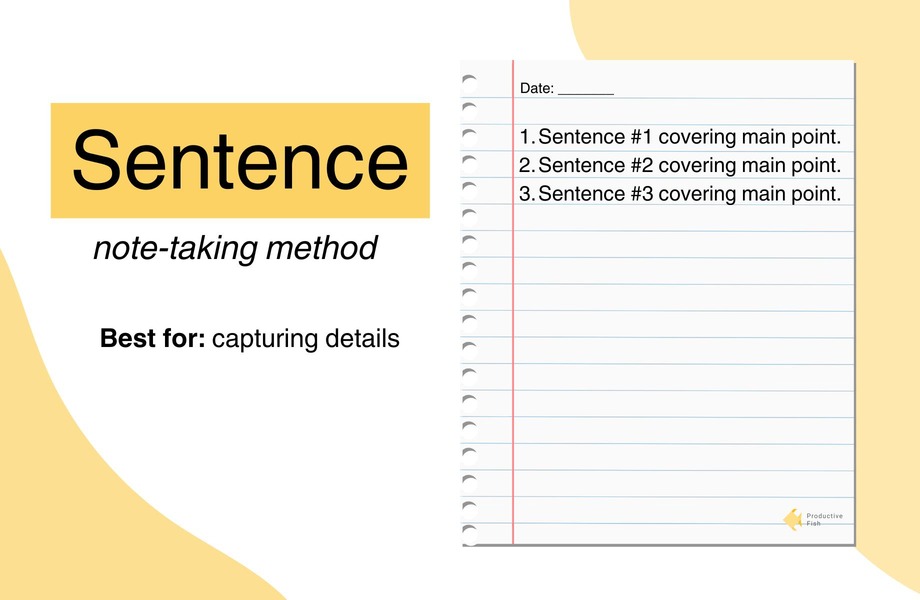
Here's a breakdown of how you can put it into action:
- First, give your full attention to what's being said. You're on the lookout for new ideas or facts, treating each one as its own little nugget of wisdom.
- Next, as you catch onto a new idea or fact, jot it down as a full sentence. Think of it as giving each idea its own space to shine. This makes it much easier to revisit and understand your notes later on.
- Now, this method isn't big on complex structures, but that doesn't mean you can't add a little organization if you like. Feel free to group related ideas with headings, bullet points, or numbers. Whatever helps you make sense of it all.
So sentence note taking method is a robust strategy that prioritizes clarity and simplicity. It's particularly effective for those who prefer a linear and unembellished approach to recording information.
Check out Productive Fish's collection of templates for note-taking.
3 Tips to Take Better Notes
Now that you know all about effective note taking methods, let’s look at additional tips to take your note-taking game to the next level and supercharge your productivity.
Prepare Your Note-Taking Material
Whether you use a pen and paper or a device to take your notes, ensure your notebook still has blank pages for you to write, your pen has ink, or your device is charged. Also, find a spot in the room where you can hear the teacher or speaker and see what they write on the whiteboard.
If you've been asked to read materials before a class or a meeting, prepare an outline and write it down on your page. This will streamline the note-taking process while allowing you to easily understand the concepts and ideas discussed.
Practice Active Listening
Many of us tend to daydream during meetings or classes. In fact, 90% of employees report daydreaming during meetings. The issue is that when you’re writing down bits and pieces of information without actively listening and understanding what is being said, you don’t retain information. And you’re also not recording topics and conversations effectively.
So, be engaged during meetings or lectures, ask questions, and actively seek to grasp concepts as they’re being tackled. This will not only allow you to capture key information, but it will also help you recall the information better later down the track.
Use Shorthand
Did you know that the average student writes ⅓ words per second while the average person speaks at a rate of ⅔ per second?
Now, that makes it tricky if you’re trying to capture everything someone says!
That’s why to record every critical piece of information, use your own shorthand system. For instance, instead of writing ‘’plus’’, use ‘’+’’. And you can also abbreviate words or expressions that are repeated several times during the event. For instance, instead of writing note-taking methods 30 times, write ‘’ntm’’).
Pen and Paper vs. Digital Note-Taking
When it comes to taking notes, there are two main methods to choose from: pen and paper or digital note-taking. Both methods have their pros and cons, and which one is better for you ultimately depends on your personal preferences and needs.
Pen-and-paper note-taking is a tried and true method that can help you better retain information and remember what you've learned. It also allows for greater flexibility and creativity, as you can easily draw diagrams or doodle alongside your notes.
Digital note-taking system is more accessible from multiple devices and share them with others. It's also easier to organize and search through your notes, as many digital note-taking apps offer robust search functions and tagging systems. Additionally, digital note-taking can be more environmentally friendly, as it eliminates the need for paper and reduces waste.
Ultimately, the best way to determine which method of note-taking is right for you is to try both and see which one works best for your individual needs and preferences. You can opt for any taking note method listed earlier, whether you note by pen or digitally. Some people prefer the tactile experience of writing on paper, while others prefer the convenience and organization of digital note-taking. So, don't be afraid to experiment and find what way works best for you.
FAQ
Why note-taking is important?
Taking notes helps you capture essential information, so you don't have to rely on memory alone. By writing things down, you're giving yourself a roadmap to revisit later, whether it's for a test, a presentation, or just to expand your understanding.
It also helps you focus, understand, remember, and even sparks your creativity. Think of it as having a conversation with your future self, making sure you don't forget what you've learned.
What note-taking method is the best?
It's the one that fits you like a glove, supports your learning, and makes you feel like a note-taking ninja. If you're a fan of all things straightforward, the Sentence Method might feel like home. Love seeing how things connect? Mind Mapping could be your jam. Want to get into deep reflection? The Cornell Method could be calling your name. Don't be afraid to mix and match until you find your perfect match!
Take Your Notes
And that’s a wrap!
Taking notes doesn’t have to be difficult, but it’s a skill that needs to be honed. As with everything else in life, the more you practice, the better you’ll be at it. Good note-taking will help you immerse yourself into what was discussed, understand connections between topics, and better remember vital information. And this, in turn, will help you save time and effort in retaining information, boosting your productivity, and helping you achieve your goals.
So, time to grab a pen and paper (or your note-taking app) and start practicing ;)